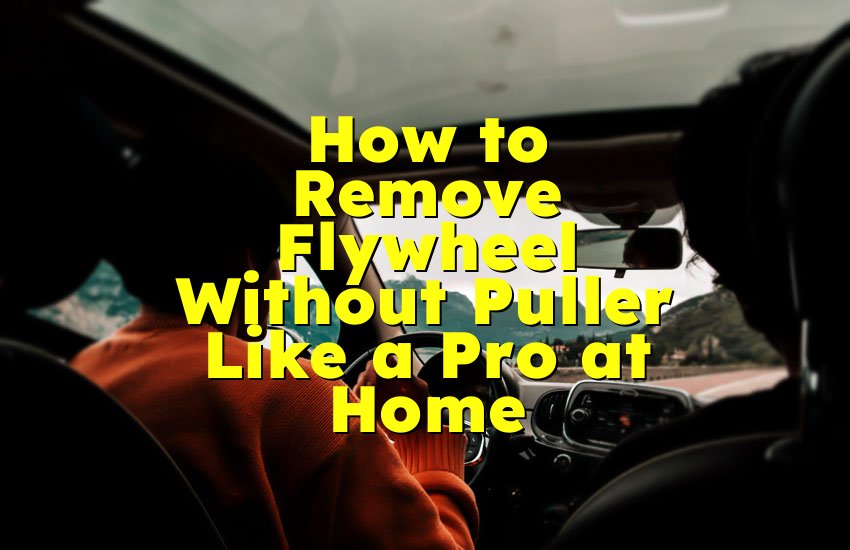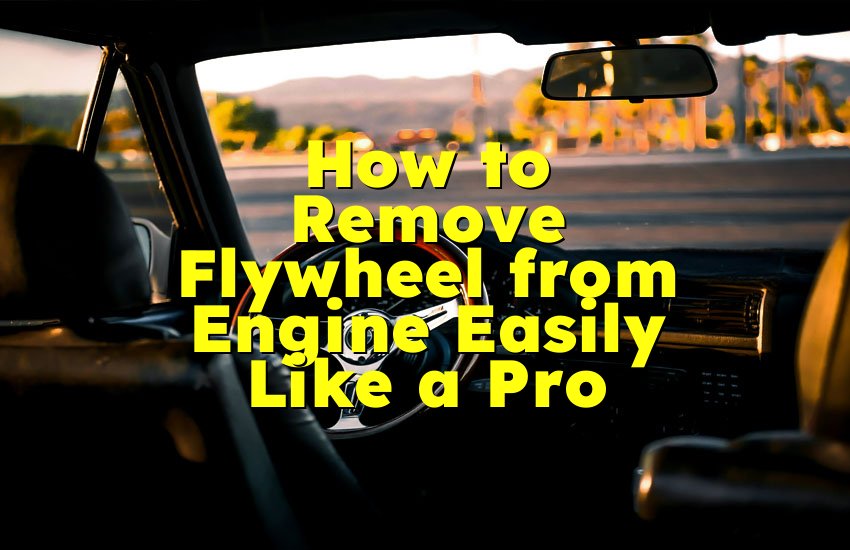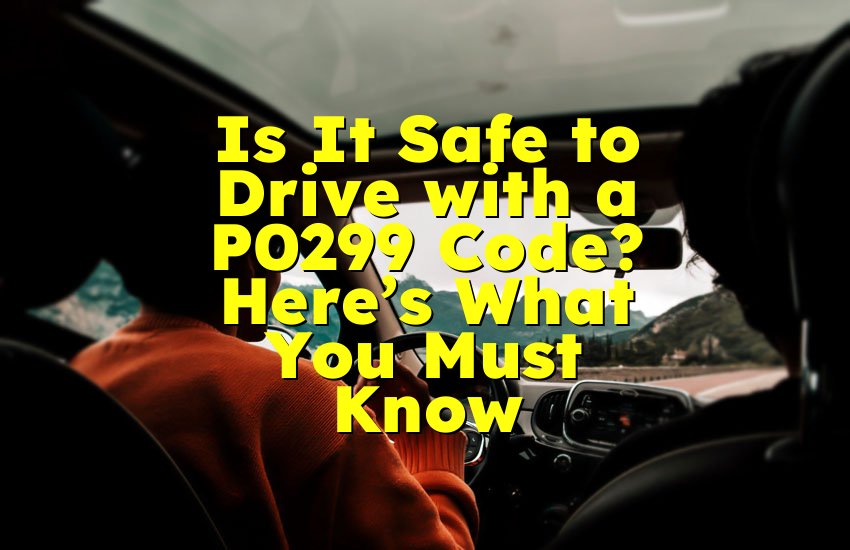As an Amazon Associate, I earn from qualifying purchases at no extra cost to you.
How to Shim Starter Closer to Flywheel Like a Pro at Home
It usually starts with that awful grinding sound when you hit the key. You stop, try again, and hear the same noise. That's when you realize something's off with the starter alignment. It's frustrating, but don't panic — you can fix it yourself. Shimming the starter closer to the flywheel sounds technical, yet it's surprisingly doable with some patience and the right steps.
Disconnect the battery before anything. Remove the starter carefully and inspect the teeth gap between the starter gear and flywheel. Use a feeler gauge or paper clip to measure clearance. Add or remove shims as needed until the gears mesh smoothly. Tighten bolts evenly, test the starter sound, and repeat if grinding or whining continues. Reconnect everything and start the engine to confirm a perfect fit.
Understanding the Correct Starter-to-Flywheel Gap
Before you even grab a wrench, it's worth knowing why shimming matters. The gap between your starter gear and the flywheel ring gear determines how smoothly they engage. Too far apart and the gears grind; too close and they bind. Either way, you'll hear it immediately — a harsh screech or clunk that makes your heart drop.
In most cars, the ideal clearance is roughly the thickness of a standard paper clip, about 0.020 inches. You can actually test this by inserting one between the teeth while the gears are engaged manually. If it's too tight or loose, it's time to adjust. I remember once ignoring a light grinding noise and ending up replacing both my starter and flywheel. Not cheap.
Always start by disconnecting the battery to stay safe. Then, loosen the starter bolts just enough to slide shims in or out. Shims are thin metal plates that change the distance between the starter and the engine block. They may look insignificant, but one shim can completely change the sound and feel of your start-up.
After adjusting, hand-crank the engine slightly and check how the gears mesh. If you see smooth, even engagement with no rubbing or skipping, you're in the sweet spot. Listen closely — a clean, crisp engagement sound means you've nailed the alignment.
- Proper gap prevents grinding and binding
- Use a paper clip or feeler gauge to measure
- Disconnect battery before adjusting
- Check engagement sound after every tweak
Inspecting Starter and Flywheel Teeth Condition
Before shimming, always inspect the teeth on both the starter gear and the flywheel. Damaged or worn teeth can make perfect alignment impossible. If one side is chipped or rounded, even the best shim won't help. I once spent an hour shimming before realizing a few flywheel teeth were missing completely. Lesson learned.
Use a flashlight and rotate the engine manually with a socket wrench. Look for uneven wear, broken edges, or shiny spots that show poor contact. If the damage is minor, light filing can smooth things out. But if it's deep or widespread, replacement might be the only real solution.
Sometimes, starters with worn bushings cause the gear to wobble slightly, giving the illusion of a bad gap. In that case, no amount of shims will fix it. It's better to replace or rebuild the starter first. You'll save time and avoid repeated disassembly.
While inspecting, clean the mounting area too. Grease or rust buildup can throw off your measurements. A quick scrub with a wire brush and brake cleaner can make a big difference in getting an accurate fit later.
- Inspect gear teeth for chips or rounding
- Rotate engine manually for full view
- Replace damaged parts if needed
- Clean mounting surfaces before fitting
Measuring the Gap Between Starter and Flywheel
Once everything looks good, it's time to measure the gap precisely. You'll need a feeler gauge, but a paper clip or thin wire also works in a pinch. The goal is around 0.020 inches. Too much space causes grinding, too little causes binding — both sound equally bad but mean opposite issues.
To measure, engage the starter gear manually or bump the ignition just enough to mesh the gears. Then slide the gauge between the tooth faces. It should fit snugly, not forced or loose. A smooth slide means you're close. Take your time here; accurate measurement saves endless trial and error later.
Sometimes the sound tells you everything. A loud clunk means too tight, while a metallic grind means too wide. Listen carefully during cranking tests and make micro-adjustments. Each shim can change the feel drastically. Even one thin shim can turn noise into smooth motion.
If you're unsure, start with the thinnest shim possible and add gradually. Never stack too many at once — it can misalign the starter or crack the housing. Small, patient adjustments always win over big risky moves.
- Use feeler gauge or paper clip for 0.020" gap
- Adjust slowly with thin shims
- Listen for grinding or binding noises
- Avoid stacking multiple shims unnecessarily
Installing the Shims Correctly
After measuring, you're ready to install the shims. These tiny pieces of metal may seem trivial, but their placement is everything. Start by loosening the starter bolts just enough to slip the shim between the mounting pad and engine block. Make sure it sits flat — any fold or wrinkle will throw off the alignment.
Use light hand pressure when tightening to check if the starter sits evenly. Uneven torque can tilt the unit slightly, making the gear engagement uneven. I once had a starter that chirped only when hot; turned out one bolt was just a bit tighter than the other. Tiny differences matter.
Once snug, reconnect the battery temporarily and do a short crank test. Listen carefully — does it sound smooth, or does it still grind? If it's still noisy, stop immediately and recheck the gap. Don't force multiple starts; that's how flywheel damage begins.
When you're satisfied, tighten everything to torque specs. A dab of thread locker can help prevent vibration from loosening the bolts later. Double-check all wires, including the solenoid connection. Clean, tight connections keep everything running consistent.
- Place shims flat and even
- Tighten bolts evenly for alignment
- Test crank briefly to check sound
- Use thread locker to secure bolts
Testing and Fine-Tuning Alignment
Now comes the satisfying part — testing. With everything bolted and reconnected, do a few short starts. Listen closely to the sound. A clean, crisp engagement followed by smooth cranking means success. Any grinding or whining means you're still off slightly.
Sometimes, after driving for a few minutes, things settle in differently due to heat and vibration. If new noises appear, it's worth rechecking the bolts and shim placement. Metal expands with heat, so what sounds perfect cold may shift a little hot.
If you hear a high-pitched whine after the engine starts, that usually means the starter is too close. Add a tiny shim and retest. On the other hand, if it grinds or clunks before engaging, it's too far. Remove a thin shim and try again. It's all about micro-adjustments.
Once you've got a clean sound and instant start-up, you'll feel the difference immediately. The engine will turn over confidently without hesitation or strain. It's small mechanical harmony, the kind you can actually hear.
- Listen for grinding or whining sounds
- Adjust based on sound feedback
- Check again after warming up
- Perfect alignment means smooth, quiet engagement
Common Mistakes and Quick Fixes
Even experienced DIYers make a few mistakes during this job. One common error is forgetting to check starter bolt torque after the first test. Loose bolts can cause shifting during start-up, changing your carefully measured gap. Always retighten after testing.
Another mistake is assuming all starters need shims. Some engines come perfectly aligned, and adding shims unnecessarily can make things worse. Always measure first before adding anything. I once helped a friend who had stacked three shims "just to be safe" — his starter barely touched the flywheel afterward.
Sometimes, the issue isn't alignment at all but a weak battery or corroded connection. Low voltage makes the starter turn slower, mimicking grinding sounds. So before tearing things apart, check battery voltage and cable condition. It might save hours of unnecessary work.
Lastly, don't rush reinstallation. Misaligned wiring, missing bolts, or debris between surfaces can undo all your careful adjustments. Take a deep breath, double-check everything, and only then hit the ignition.
- Retighten bolts after testing
- Don't add unnecessary shims
- Check battery and wiring first
- Keep mounting surfaces clean
Final Thoughts
Learning how to shim starter closer to flywheel isn't just about stopping noise — it's about making your engine start perfectly every time. Once you get that smooth, confident crank, you'll know it was worth the effort. Take your time, listen closely, and trust your adjustments. Every small tweak brings you closer to that perfect start.
| Task | Ideal Measurement/Tip | Common Mistake or Warning |
|---|---|---|
| Starter-to-Flywheel Gap | 0.020 inches (paper clip) | Too tight causes binding |
| Shim Placement | Flat between starter and block | Wrinkled shim causes tilt |
| Bolt Torque | Tightened evenly | Uneven torque misaligns starter |
| Teeth Inspection | No chips or wear | Ignoring damaged teeth |
| Testing | Short crank tests | Continuous grinding damages gears |
| Battery Check | 12.6V+ before starting | Weak battery mimics grinding |
| Shim Count | Start with one | Over-shimming causes misfit |
| Sound Check | Smooth, clean start | Whining = too close, grinding = too far |
Frequently Asked Questions (FAQs)
Is it safe to drive with a poorly shimmed starter?
No, it's not safe to keep driving with a misaligned starter. Over time, the grinding or clunking sound means the starter gear and flywheel are wearing each other out. Each start shaves off a bit of metal, and that can lead to stripped teeth or even a cracked flywheel. Fixing alignment early prevents expensive repairs later and keeps starts smooth.
Can shimming fix all starter grinding issues?
Not always. Shimming works when the grinding is due to poor gear engagement distance, but if the starter or flywheel teeth are already damaged, shimming won't help much. In such cases, you might need to replace the worn parts first. It's best to inspect the gears carefully before deciding whether a shim will actually solve the problem.
Do I need to disconnect the battery before shimming?
Yes, absolutely. Always disconnect the battery before touching the starter or wiring. Starters draw high current, and a small accidental contact can cause sparks or injury. Taking a minute to pull the battery cable saves a lot of trouble. It's one of those simple safety habits that every DIY mechanic should practice.
Can I reuse old shims from another car?
You can, but only if they're the same size and undamaged. Bent or corroded shims can cause uneven mounting surfaces. Even slight warping changes the angle of the starter, leading to more problems. It's safer and easier to buy a new shim kit — they're cheap and readily available.
Is it normal for new starters to need shims?
Sometimes, yes. Even new starters can vary slightly in size or mounting depth depending on the brand. Manufacturers often include shims for this reason. Always test the starter engagement sound after installation, even if it's brand new. A quick adjustment early prevents wear later.
Do I need special tools to measure the gap?
Not really. While a feeler gauge gives the most accurate reading, a simple paper clip or thin wire can work too. The goal is to feel a snug fit between the starter gear and flywheel teeth. If it slides too freely or doesn't fit at all, you'll know whether to add or remove a shim.
Can too many shims damage the starter?
Yes, stacking too many shims pushes the starter too far from the flywheel. That causes incomplete gear engagement, grinding noises, and sometimes broken teeth. Always start with the thinnest shim and test before adding more. A small change can make a big difference.
Do I have to torque the bolts after every adjustment?
Yes, you should. Tightening the bolts properly each time ensures accurate alignment during testing. Loose bolts can shift the starter's position slightly and give false readings. Even small movement during cranking can undo all your careful measurements, so always torque them down before testing again.











